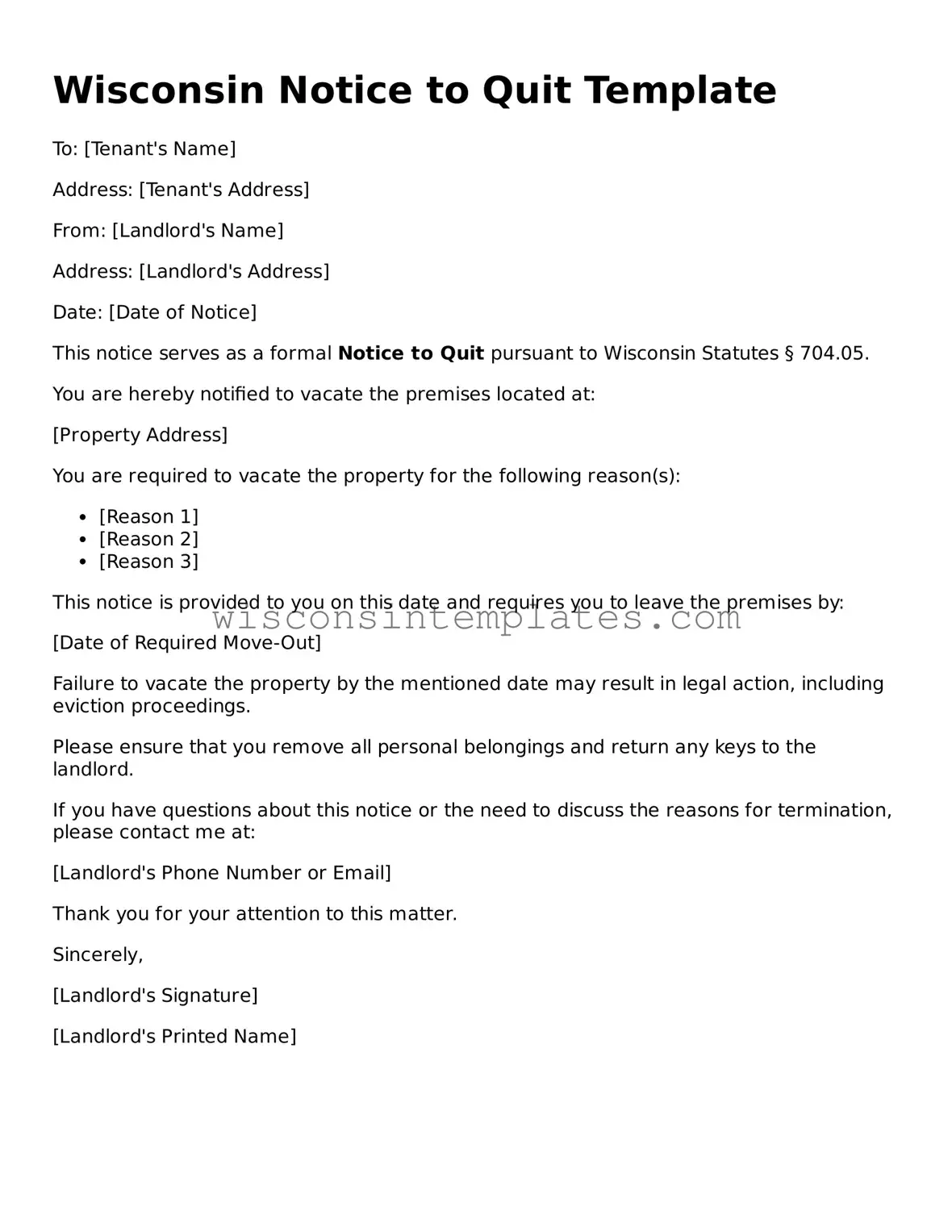The Wisconsin Notice to Quit form plays a critical role in the landlord-tenant relationship, serving as a formal communication tool when a landlord seeks to terminate a tenancy. This document outlines the specific reasons for the termination, whether due to non-payment of rent, lease violations, or other grounds permitted under state law. It is essential for landlords to understand that this notice must be delivered properly and contain all required information to ensure compliance with Wisconsin regulations. The form typically specifies the timeframe within which the tenant must vacate the premises, allowing for a clear timeline and reducing potential disputes. Furthermore, the Notice to Quit can vary depending on the circumstances, with different requirements for various types of tenancies, such as month-to-month leases versus fixed-term agreements. By adhering to the guidelines set forth in this form, landlords can protect their rights while also ensuring that tenants are treated fairly and informed of their obligations.
